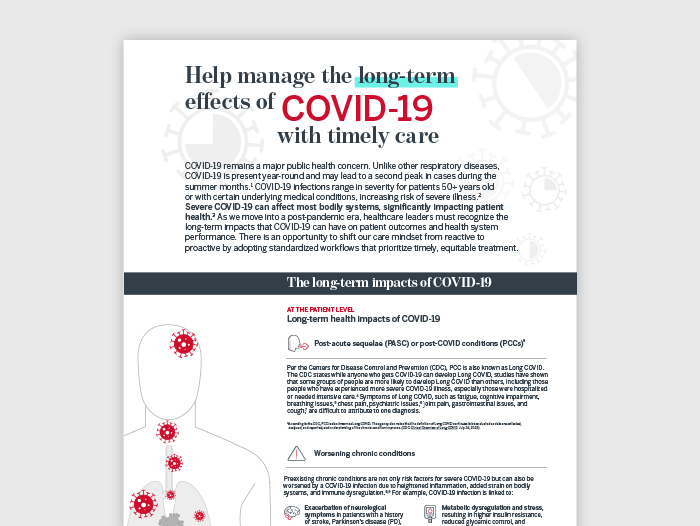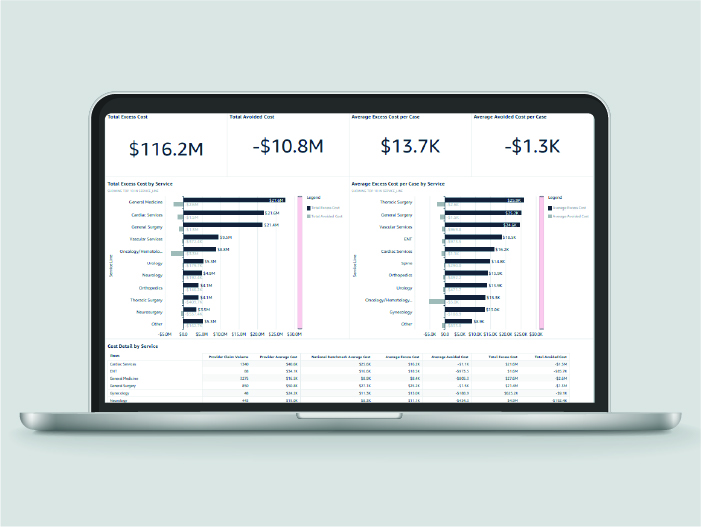Auto logout in seconds.
Continue LogoutThe Leapfrog Group recently released its fall 2023 Hospital Safety Grades, with almost 30% of hospitals earning an "A."
Methodology
For the latest report, Leapfrog assigned almost 3,000 general acute care hospitals letter grades from "A" to "F" using 22 evidence-based measures of patient safety. These measures were placed into two domains, each of which accounted for 50% of a hospital's overall score:
- Process/structural measures, which represent how often a hospital gives patients a recommended treatment for a given medical condition or procedure and the environment where patients receive care
- Outcome measures, which represent what happens to a patient while they receive care
Hospitals missing more than six process/structural measures, more than five outcome measures, or the CMS Medicare PSI 90 Patient Safety and Adverse Events composite are not graded. The ratings, which are updated twice a year, also do not cover facilities such as military or VA hospitals, critical access hospitals, specialty hospitals, children's hospitals, or outpatient surgery centers due to a lack of sufficient data.
How hospitals performed
For the fall 2023 Hospital Safety Grades:
- Almost 30% of hospitals earned an "A"
- 24% of hospitals earned a "B"
- 39% of hospitals earned a "C"
- 7% of hospitals earned a "D"
- Less than 1% of hospitals earned an "F"
The top 10 states with the highest number of "A" grade hospitals were:
1. Utah
2. Virginia
3. North Carolina
4. Pennsylvania
5. South Carolina
6. Connecticut
7. Montana
8. Tennessee
9. Florida
10. Texas
According to Leapfrog, Vermont, Wyoming, Delaware, Washington, D.C., and North Dakota had no hospitals that earned an "A" grade.
Hospitals also reported a decrease in three hospital-acquired infections (HAIs), Methicillin-resistant Staphylococcus aureus (MRSA), central line-associated bloodstream infections (CLABSI), and catheter-associated urinary tract infections (CAUTI). This decrease is significant since rates of MRSA, CLABSI, and CAUTI all reached a five-year high during the pandemic.
Over 85% of hospitals reported improvements in at least one of the three HAIs, with 19% of hospitals improving on all three. Only 16% of hospitals reported that their infection rates worsened or had no improvement.
However, patient experience scores nationwide declined for a second year in a row. All states experienced a significant decline in patient experience scores from fall 2021 to fall 2023. According to the report, the most significant declines were in "communication about medicines" and "responsiveness of hospital staff."
Commentary
According to Leapfrog president and CEO Leah Binder, the organization is "encouraged by the improvement in infections and applaud hospitals for reversing the disturbing infection spike we saw during the pandemic." However, she also noted that "there's still more work to be done," particularly regarding patient experience.
"Hospitals need to take a hard look at what they are unnecessarily continuing post-pandemic that are not helping patients," Binder said.
According to health experts, persistent staffing shortages may be contributing to declining patient experience scores. "Some of the staff that has remained may not have the same level of resilience and tolerance they once had," said Pablo Moreno Franco, chair of the department of critical care medicine at Mayo Clinic Florida and a member of Leapfrog's advisory board.
Hospitals are now turning to new technologies, such as telemedicine and artificial intelligence, to help address these issues and improve patient care. "Many hospitals are innovating to help make patient experience better, which is critical because these results are disheartening and unsustainable," Binder said.
However, Franco noted that new technologies or changes need to be implemented carefully to avoid adding unnecessary stress to healthcare workers and patients. "If we try to bring too much technology too quickly that upsets the staff as well as the patient," he said.
Overall, Franco said that he hopes that "the combination of creativity with precise execution and better use of technology can help us not only get to pre-pandemic levels but get even better by learning from these lessons." (Leapfrog news release, 11/6; Leapfrog Hospital Safety Grades "About the Grade", accessed 11/6; Reed, Axios, 11/6; Weintraub, USA Today, 11/6; Devereaux, Modern Healthcare, 11/4)
Writing in Modern Healthcare, Mari Devereaux explains how St. Bernard Hospital in Chicago improved its patient safety grade from an "F" to an "A" in just under two years — something health experts called an "extremely rare" feat.
Don't miss out on the latest Advisory Board insights
Create your free account to access 1 resource, including the latest research and webinars.
Want access without creating an account?
You have 1 free members-only resource remaining this month.
1 free members-only resources remaining
1 free members-only resources remaining
You've reached your limit of free insights
Become a member to access all of Advisory Board's resources, events, and experts
Never miss out on the latest innovative health care content tailored to you.
Benefits include:
You've reached your limit of free insights
Become a member to access all of Advisory Board's resources, events, and experts
Never miss out on the latest innovative health care content tailored to you.
Benefits include:
This content is available through your Curated Research partnership with Advisory Board. Click on ‘view this resource’ to read the full piece
Email ask@advisory.com to learn more
Click on ‘Become a Member’ to learn about the benefits of a Full-Access partnership with Advisory Board
Never miss out on the latest innovative health care content tailored to you.
Benefits Include:
This is for members only. Learn more.
Click on ‘Become a Member’ to learn about the benefits of a Full-Access partnership with Advisory Board
Never miss out on the latest innovative health care content tailored to you.


